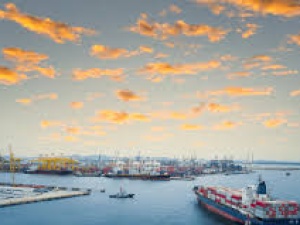Coastal areas, where land meets sea, are among the most dynamic and crucial environments on Earth. They support a wealth of biodiversity, drive economic activities, and provide essential services to millions of people. However, these regions face numerous challenges due to natural processes and human activities. Sustainable coastal management is essential for preserving these vital areas. This post explores the importance of coastal management, the strategies employed, and their impacts, supported by numerical data and recent studies. Coastal regions account for about 20% of the Earth's land area and are home to approximately 40% of the global population, which amounts to around 3.2 billion people (UNEP, 2021). These areas support significant economic activities. For instance, coastal and marine tourism generates around $500 billion annually, representing 20% of the global tourism market (UNWTO, 2020). Additionally, coastal fisheries contribute about $35 billion annually to the global economy, supporting the livelihoods of over 120 million people (FAO, 2022). Despite their importance, coastal areas are highly vulnerable to environmental stressors. According to the Intergovernmental Panel on Climate Change (IPCC), sea levels have risen by about 3.3 millimeters per year from 1993 to 2020, and this rate is expected to accelerate in the coming decades (IPCC, 2021). Rising sea levels, combined with increased storm intensity and coastal erosion, pose significant threats to these regions. Coastal management involves addressing a variety of challenges: Erosion and Accretion: Coastal erosion is a major issue, with an estimated 70% of the world's coastlines experiencing erosion to some degree (Millennium Ecosystem Assessment, 2005). For instance, the U.S. East Coast sees an average annual erosion rate of 1.8 meters per year in some areas (National Oceanic and Atmospheric Administration, NOAA, 2020). Conversely, coastal accretion, where sediment deposits build up, can also pose challenges by altering habitats and affecting human infrastructure. Flooding: Coastal flooding is a growing concern, with an estimated 1.2 billion people living in low-lying coastal zones at risk of flooding from sea-level rise (UNEP, 2021). In 2020 alone, global economic losses from coastal flooding amounted to approximately $32 billion (Munich Re, 2021). Habitat Loss: Coastal ecosystems such as mangroves, salt marshes, and coral reefs are under threat. Mangrove forests, which act as natural buffers against storms and provide critical habitats, have been reduced by about 50% globally over the past century (Giri et al., 2011). Coral reefs, which support a quarter of all marine species, are declining at a rate of about 1% per year due to bleaching and other stressors (Hoegh-Guldberg et al., 2018). Effective coastal management strategies are crucial for mitigating these challenges. Here are some key approaches: Integrated Coastal Zone Management (ICZM): ICZM is a holistic approach that considers environmental, social, and economic factors in managing coastal areas. This strategy aims to balance the needs of coastal communities with environmental protection. A study in the Mediterranean region found that implementing ICZM can reduce coastal erosion rates by up to 30% and improve the resilience of coastal communities (Boudouresque et al., 2012). Coastal Defenses: Hard engineering solutions, such as sea walls and groynes, are commonly used to protect against erosion and flooding. For example, the Thames Barrier in London, a major flood defense structure, protects around 1.25 million people and properties worth approximately £200 billion from flooding (Environment Agency, 2020). However, these measures can be costly and may have unintended environmental impacts, such as altering sediment transport. Soft Engineering: Soft engineering approaches use natural processes to mitigate coastal erosion and flooding. These include beach nourishment, where sand is added to eroding beaches, and the restoration of natural habitats like wetlands and mangroves. Beach nourishment projects, such as those undertaken in Miami Beach, have been shown to reduce erosion rates by up to 50% and enhance local tourism (Miami-Dade County, 2021). Habitat Restoration: Restoring damaged ecosystems is critical for maintaining coastal resilience. For example, the restoration of mangrove forests in Vietnam has been successful in reducing coastal erosion by up to 70% and enhancing local fishery productivity (Barbier et al., 2011). Similarly, coral reef restoration projects have demonstrated improved reef health and biodiversity, with some reefs showing recovery rates of up to 30% in terms of coral cover (Edwards et al., 2019). Climate Adaptation: Adapting to climate change is essential for long-term coastal management. This includes implementing measures to cope with sea-level rise, such as elevating buildings and infrastructure, and developing early warning systems for extreme weather events. The Netherlands' Delta Works, a comprehensive flood protection system, is an example of successful adaptation, combining dikes, storm surge barriers, and innovative engineering to protect millions of people (Delta Commissioner, 2021). Sustainable coastal management is vital for preserving the health and functionality of coastal areas. With nearly 40% of the world's population living in these regions and billions of dollars in economic activity at stake, effective strategies are essential. By employing a combination of integrated approaches, from hard and soft engineering to habitat restoration and climate adaptation, we can safeguard these critical environments for future generations. The challenges are significant, but so are the opportunities. As we advance our understanding and technology, we can enhance our coastal defenses, restore vital ecosystems, and ensure that these cherished and vital areas continue to thrive. References:The Importance of Coastal Areas
Challenges in Coastal Management
Strategies for Sustainable Coastal Management
Conclusion
